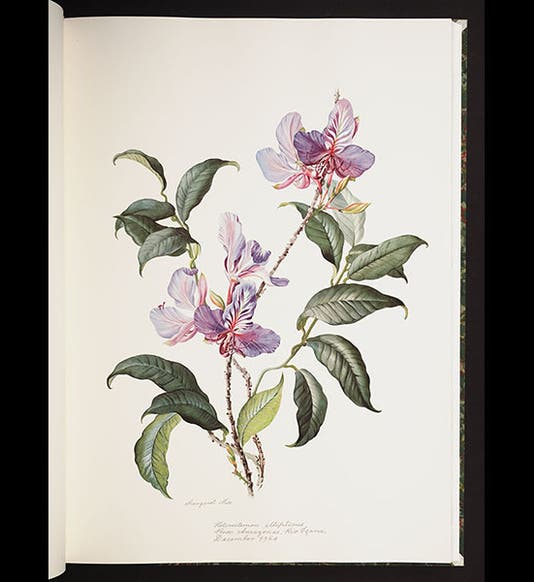Scientist of the Day - Margaret Mee



Margaret Ursula Mee, an English botanical artist and environmentalist, was born May 22, 1909. She moved to Brazil in 1952, and in 1956 she engaged in her first painting expedition into the Amazon rainforest, an activity she would pursue for over 30 years. She usually travelled alone, with locals as guides, and she did most of her painting on site. She also witnessed the growing deforestation of Amazonia and soon began actively working to call attention to the devastation being wrought by commercial interests, and to the plight of the indigenous peoples. Her paintings attracted an international following, allowing her to support herself and her environmental activism with her art. In 1968, she published her first collection of prints from her paintings, Flowers of the Brazilian Forests. There are only 32 prints in the volume, and they are photographically reproduced, but the large folio was the handiwork of a fine arts press in Amsterdam and was beautifully produced, and we were happy to acquire a copy just last year.
If you would like to see Mee's original paintings and are not already the lucky owner of one, you should travel to the Royal Botanical Gardens Kew in London, where they have quite a number of Mee watercolors. They mounted a Mee exhibition just last year, in which they displayed, among other drawings, her original painting of the Amazonian moonflower, the night-blooming Cereus of the rainforest, which flowers just once a year at night. A museum blog reproduces the painting, as well as a photograph of a case displaying her paint box and other exploring paraphernalia, and we reproduce these above (fourth and fifth images).
The first three images above are from Mee’s 1968 book and depict, in order, a Heterostemon, a russet Begonia, and a Neoregelia margaretae. The last turned out to be a new species of Bromeliad and was named in Margaret Mee's honor.
Dr. William B. Ashworth, Jr., Consultant for the History of Science, Linda Hall Library and Associate Professor, Department of History, University of Missouri-Kansas City. Comments or corrections are welcome; please direct to ashworthw@umkc.edu.








